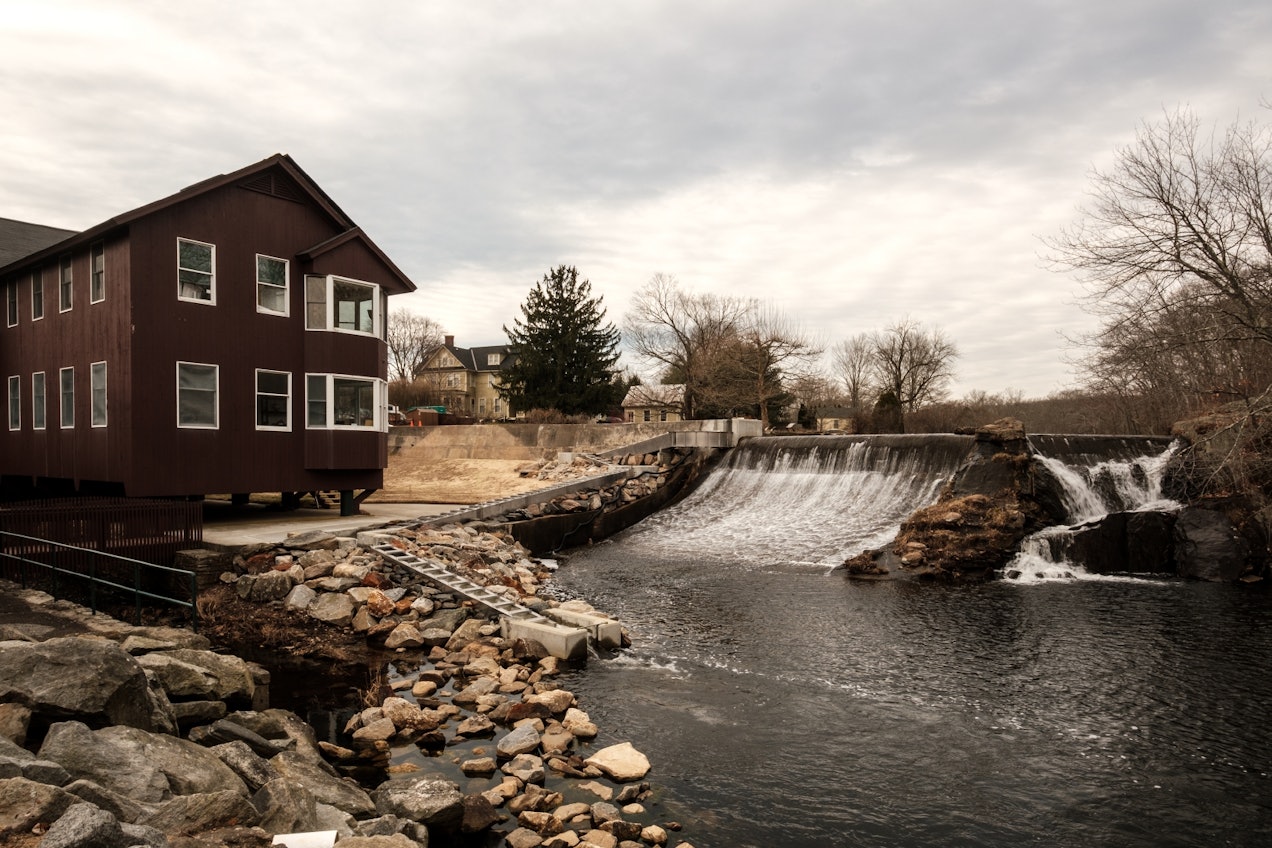John T. and Jane A. Wiederhold Fishway
Centerbrook constructed a fishway on its property in partnership with The Nature Conservancy (TNC), the Essex Land Trust, the Connecticut Department of Energy and Environmental Protection (DEEP), and Nathan L. Jacobson & Associates. The goal is to return migratory fish to their native spawning habitat in our Mill Pond, which, along with the Falls River, was identified as a watershed of strategic importance to restoring native fish runs in the lower Connecticut River Valley.
The Nature Conservancy/Centerbrook Architects & Planners
The design, which was funded by a grant from the National Fish and Wildlife Foundation’s Long Island Sound Futures Fund, called for a series of aluminum structures known as “steep-passes” to allow the fish to swim from the Falls River up to the Mill Pond and back out again. The steep-passes are connected to concrete pools that allow the fish to rest, and entrance/exit structures are located to promote safe passage. The turning pool is fitted with underwater windows to allow the fish to be viewed and counted. The fishway snakes its way up our sloped northern property boundary and rests upon stone riprap to blend into the landscape. Construction was supported by a $250,000 grant from the John T. and Jane A. Wiederhold Foundation.
A water-powered site since 1697, Centerbrook’s property includes an 11-foot low-head concrete dam and spillway, and infrastructure to produce electricity from a hydropower turbine. While many dams can be removed to allow anadromous fish (who spawn in fresh water and live in salt water) safe passage, constructing a fishway is the only viable option on this property. Centerbrook manages its turbine to prevent mortality, and has worked with neighbors to steward the Mill Pond as a spawning habitat for blueback herring, alewife, sea lamprey, and American eels.
MORE INFORMATION
We're using cookies to deliver you the best user experience. Learn More









